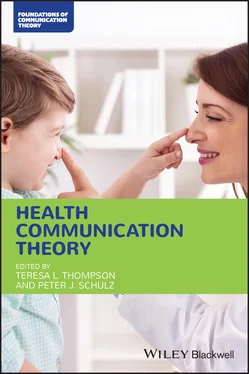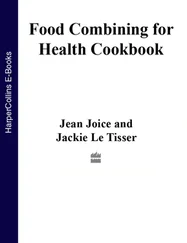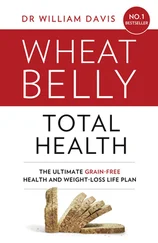68 Sharf, B. F., Harter, L. M., Yamasaki, J., & Haidet, P. (2011). Narrative turns epic: Continuing developments in health narrative scholarship. In T. L. Thompson, R. Parrott, & J. F. Nussbaum (Eds.), Routledge handbook of health communication (2nd ed., pp. 36–51). New York, NY: Routledge.
69 Sharf, B. F., & Vanderford, M. L. (2003). Illness narratives and the social construction of health. In T. L. Thompson, A. Dorsey, K. I. Miller, & R. Parrott (Eds.), Handbook of health communication (pp. 9–34). Mahwah, NJ: Erlbaum.
70 Silverman, R. E., & Baglia, J. (Eds.) (2014). Communicating pregnancy loss: Narrative as a method for change. New York, NY: Peter Lang.
71 Smith, C. (2019). Reflections on a midlife crisis: My chang(ed)(ing) life after severe traumatic brain injury. In L. W. Peterson & C. E. Kiesinger (Eds.), Narrating midlife: Crisis, transition, and transformation (pp. 177–190). Lanham, MD: Lexington Books.
72 Sparkes, A. C., & Smith, B. (2008). Narrative constructionist inquiry. In J. A. Holstein & J. F. Gubrium (Eds.), Handbook of constructionist research (pp. 295–314). New York, NY: The Guilford Press.
73 Stokes, A. Q. (2014). A matter of interpretation: Rhetorical criticism of health communication. In B. B. Whaley (Ed.), Research methods in health communication (pp. 279–297). New York, NY: Routledge.
74 Strauss, A., & Corbin, J. (1990). Basics of qualitative research: Techniques and procedures for developing ground theory. Beverly Hills, CA: Sage.
75 Tillmann, L. M. (2009). Body and bulimia revisited: Reflections on “A Secret Life.” Journal of Applied Communication Research, 37(1), 98–112. doi:10.1080/00909880802592615
76 Titus, B., & de Souza, R. (2011). Finding meaning in the loss of a child: Journeys of chaos and quest. Health Communication, 26(5), 450–460. doi:10.1080/10410236.2011.554167
77 Tullis, J. A. (2017). Death of an ex‐spouse: Lessons in family communication about disenfranchised grief. Behavioral Sciences, 7(2), 1–7. doi:10.3390/bs7020016
78 Vanderford, M. L., Jenks, E. B., & Sharf, B. F. (1997). Exploring patients’ experiences as a primary source of meaning. Health Communication, 9(1), 13–26. doi:10.1207/s15327027hc0901_2
79 Wall, S. S. (2016). Toward a moderate autoethnography. International Journal of Qualitative Methods, 15(1), 1–9. doi:10.1177/1609406916674966
80 Willer, E. K. (2016). BIRTHing ARTiculations. In S. L. Faulkner (Ed.), Inside relationships: A creative casebook in relational communication (pp. 80–85). New York, NY: Routledge.
81 Willer, E. K. (2020). Running‐in(to) transition: Embodied practice under the load of infertility, baby loss, and motherhood. Health Communication. doi:10.1080/10410236.2020.1748830
82 Willer, E. K., Krebs, E., Castaneda, N., Hoyt, K. D., Droser, V. A., Johnson, J. A., & Hunniecutt, J. (2019). Our babies[’] count[er story]: A narrative ethnography of a baby loss remembrance walk ritual. Communication Monographs. doi:10.1080/03637751.2019.1666289
83 Yamasaki, J. (2014). Age accomplished, performed, and failed: Liz Young as old on The Biggest Loser. Text and Performance Quarterly, 34(4), 354–371. doi:10.1080/10462937.2014.942871
84 Yamasaki, J., & Hovick, S. R. (2015). “That was grown folks’ business”: Narrative reflection and response in older adults’ family health history communication. Health Communication, 30(3), 221–230. doi:10.1080/10410236.2013.837569
85 Zoller, H. M. (2005). Health activism: Communication theory and action for social change. Communication Theory, 15(4), 341–364. doi:10.1111/j.1468‐2885.2005.tb00339.x
86 Zoller, H. M., & Kline, K. N. (2008). Theoretical contributions of interpretive and critical research in health communication. In E. L. Cohen (Ed.), Communication yearbook 38 (pp. 89–135). New York, NY: Routledge.
PART II Perspectives on Dyads and Groups
Конец ознакомительного фрагмента.
Текст предоставлен ООО «ЛитРес».
Прочитайте эту книгу целиком, купив полную легальную версию на ЛитРес.
Безопасно оплатить книгу можно банковской картой Visa, MasterCard, Maestro, со счета мобильного телефона, с платежного терминала, в салоне МТС или Связной, через PayPal, WebMoney, Яндекс.Деньги, QIWI Кошелек, бонусными картами или другим удобным Вам способом.












